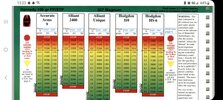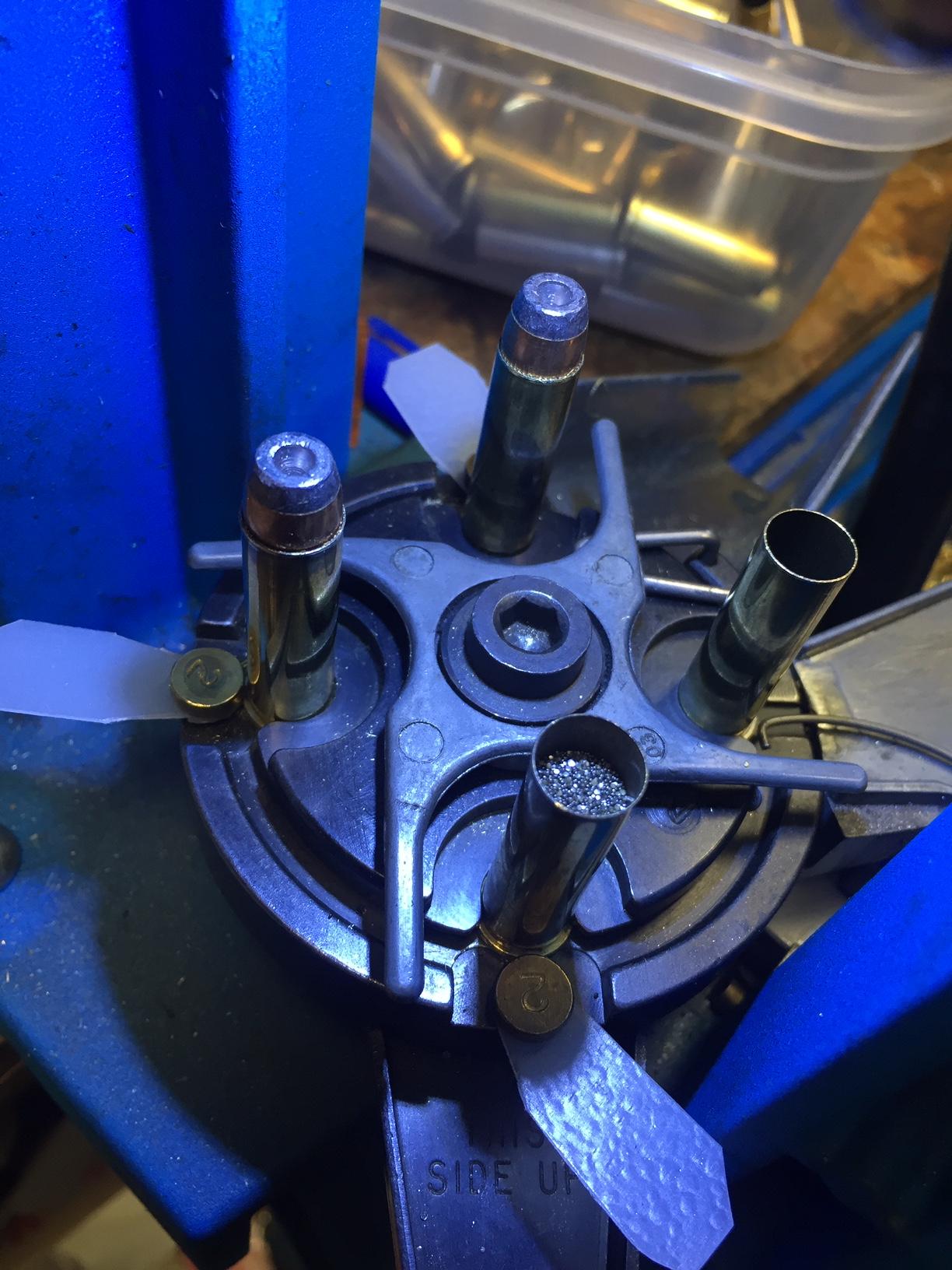Hello everyone, new guy on the forum here. I was hoping to gain a little experience from everyone. I have some questions about .357 magnum load data.
This is what I got so far: Hornady lock and load AP loader, all set up and ready to go.
Cases cleaned and primed with small magnum pistol primers.
Will be using H110 Hodgdon powder.
Will be using Hornady 125 gn XTP at .357 diameter.
This is where I need a little help. My research from Hodgdon say starting load at 21.0 gn and max load at 22.0gn. And they state a barrel length of 10.00 inches.
The load data from Hornady says 125gn XTP bullet at a start load of 17.4 gn and a max at 19.9gn. And they state a barrel length of 8.0 inches.
Both state the same for c.o.a.l and trim length. No confusion there.
I will be shooting these rounds through a Taurus 605 with a 2 inch barrel.
Now, with the load data being different between the two manufacturers which one do I pay attention to the most. Powder data or bullet data? Also, do these load data amounts seem too high?
And with the drastic difference in barrel lengths between what the load data says and what I'm shooting, how do I compensate for that?
Any help you all can offer is very much appreciated. Thank you and be safe on the firing line.
Load Data and Maximum Pressure Standards
The reason for the difference is because Hodgdon is providing load data up to 41,400 CUP which is within the traditional "copper units of pressure" limit for 357 Magnum which is 45,000 CUP. The copper unit test pre-dates SAAMI and CIP, but is the traditional standard for 357 Magnum which was introduced in 1935.
SAAMI was established perhaps as far back as 1913, but it didn't get into cartridge standards until the 1970's when it transitioned US ammunition standards from CUP to psi. SAAMI established itself as a US-based standards organization and specifies a pressure limit for 357 Magnum in pounds per square inch of 35,000 psi. This is the type of measurement and limit Hornady is using to provide their load data.
Take note that 357 Magnum is specified to 44,000 psi by CIP, another standards organization, the "
Commission Internationale Permanente pour l'Epreuve des Armes à Feu Portatives " This doesn't mean that the French (actually most European countries) load 357 Magnum to higher pressures because there is a difference in how the pressure is measured. The CIP standard exposes the piezo transducer directly to the gas pressure through a hole in the casing. In the SAAMI standard, the transducer is on the chamber wall and measures pressure through the brass casing.

en.wikipedia.org
There are no good equivalency formulas to convert CUP, SAAMI, and CIP test results because the methodologies are completely different.
It is fair to say that both the Hornady and Hodgdon data could be safe. It's up to you to start at lower pressures and work up checking for indications that the load is producing too much pressure
in your gun. The signs of overpressure in a revolver are hard extraction (the cases stick inside the chambers and are difficult to eject) and then at even higher pressures, the primers can begin to crater and flow around the firing pin. (note that flattened primers are not a reliable sign of overpressure in a revolver.)
Case Capacity Limit
I just tried loading 22.0 grains of H110 in a piece of Starline brass and a 125 grain XTP would compress the charge. I think it would be difficult to get the bullet to seat over much more than that. I suspect Hodgdon's data stops there for that reason and not because of the pressure limit. I notice their load for HP-38 goes to a higher pressure at the maximum, no doubt because that charge will easily fit in the case and the pressure rather than the case capacity is the limit.
Barrel Length
Many load data sources are going to be based on a test barrel apparatus that consists of a big bar of steel that has been drilled for the bore and rifled and then the chamber reamed and drilled for the transducer. It's fit into a test machine that strikes the primer. These apparatus do not have a barrel-to-cylinder gap or forcing cone like a revolver. They also tend to have long barrels like the 10" or 8" you noted. These apparatus mostly serve to make testing a high volume various loads in various cartridges more convenient, but they also provide better data for comparing many different propellants without as many variables as common firearms would introduce. They have promise to provide consistent data from a given load data source. However, since Hodgdon acquired Western Powders brands, some of their data has been merged and there's going to be some differences in the sources there even though they appear in the same data tables.
All you need to know with respect to using a shorter barrel with a cylinder gap is that your velocities will be much lower than the published ones. There isn't a meaningful difference in the peak pressure as a result of the shorter barrel. Peak pressure is usually achieved after the bullet has moved less than half an inch -- about 0.38" for that H110 load and even less for faster burning powders. So peak pressure does not occur in the barrel, but in the cylinder. There is no need to compensate for the barrel length in the load in terms of the mass of powder used, but you can only expect to see lower velocities out of the shorter barrel. You will also find that the amount of additional velocity that slower more progressive burn rate powders provide in a long barrel is less in a short barrel. In other words, H110 might deliver 40% greater velocity than HP-38 in a long barrel, but only 15% greater velocity in a short barrel. This is because the slow/progressive propellants need time and therefore barrel length to impart their energy to the projectile.



